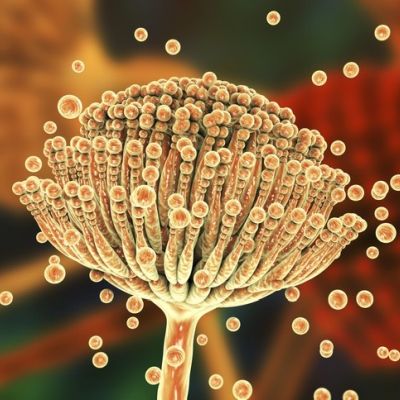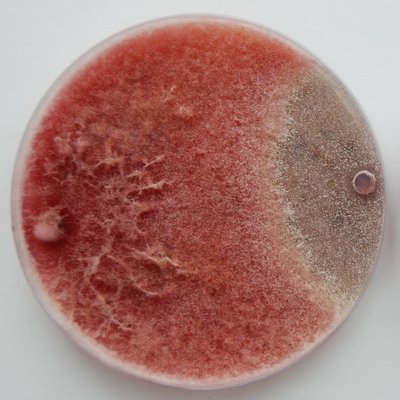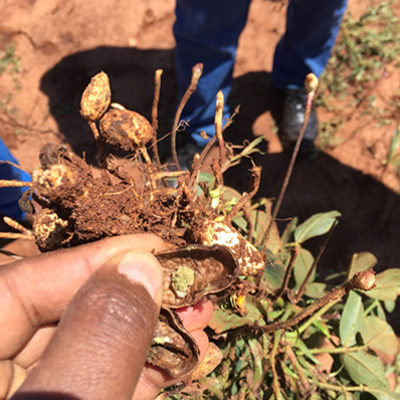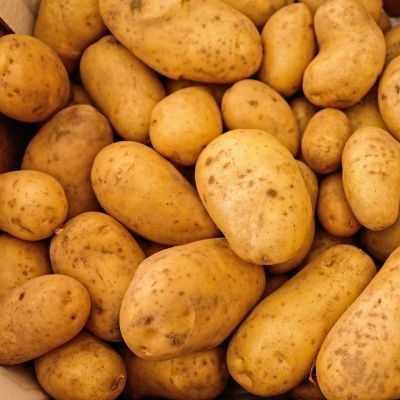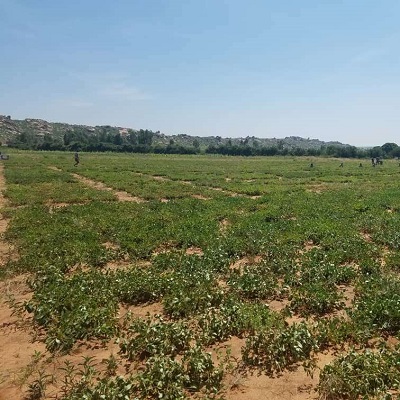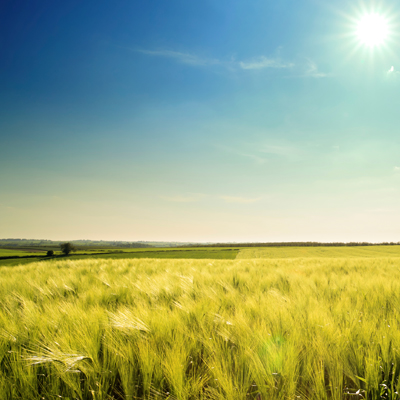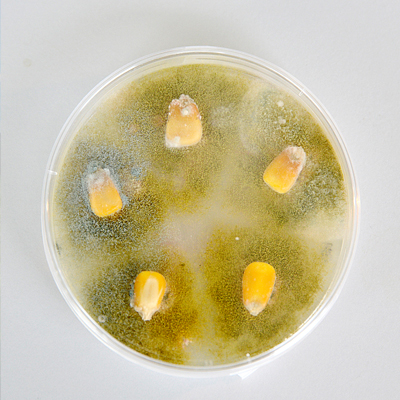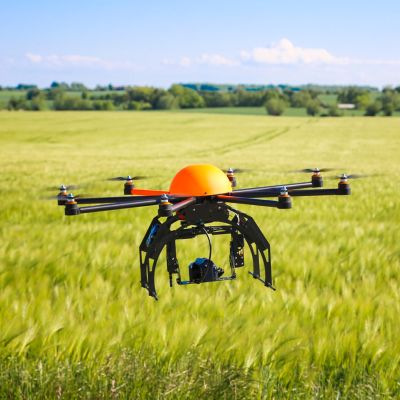Contact Professor Angel Medina Vaya
- Tel: +44 (0) 1234 758341
- Email: a.medinavaya@cranfield.ac.uk
- Twitter: @CranMycology
- ORCID
- Google Scholar
Areas of expertise
- Agrifood Systems
- Drug Discovery & Development
- Food Quality
- Food Safety
- Plants and microbes
Background
Prof Medina obtained his PhD degree in Microbiology in 2007 at the University of Valencia (Spain). He was awarded the prize for the best PhD Thesis by the University of Valencia based on the novelty and quality of his research in 2008. Subsequently, he worked for almost 2 years in the food industry until he obtained a post-doctoral grant from the Spanish Ministry of Science and Innovation to work in the Applied Mycology Group at Cranfield University (UK) from January 2009 to August 2010. During this post-doctoral training period, he applied and was successfully granted a Marie Curie Individual Fellowship (Intra-European Fellowships for Career Development) (PIEF-GA-2009-253014) (September 2010 to August 2012). He was then part of the Applied Mycology group.
Prof. Medina has focused his research interests on the impact that environmental stress has on the functioning of fungi (mainly mycotoxigenic species), the mechanisms used for ecophysiological tolerance, and the molecular basis of secondary metabolite production, especially mycotoxins and other relevant metabolites for industrial applications. He has been developing research on ecophysiology, molecular ecology and modelling of mycotoxigenic fungi growth and toxin production for more than 18 years. Prof Medina developed a rapid screening methodology which has been utilised to screen novel compounds for efficacy against mycotoxigenic spoilage fungi and to rapidly evaluate production of secondary metabolites. He has been involved in several projects to improve the storage and increase quality of small grain cereals and other groundnuts. He has developed work to identify key secondary metabolite genes in the biosynthetic pathways of mycotoxigenic fungi. In the last few years his research has examined how to integrate and use 'big data' (RNAseq, metabolomics, microarray data, growth and toxin data under interacting environmental conditions) using a systems approach. In the last five years he has led research in three main areas: i) impact of Climate Change scenarios on food security, especially related to mycotoxins in staple food commodities, ii) Development of Decission Support Systems for storage of commodities prone to mycotoxin contamination, and ii) the development of rapid methods for detection on fungal pathogensin different stages of the food chain, mainly related with the identification of fungal and bacterial specific VOC biomarkers and using detection of gasses for the development of storage Decision Support Systems (DSS) in both durables and perishables.
He has published 125 peer reviewed Journal papers, 14 book chapters and has an H-factor of 35 (Scopus) and 41 (Google Scholar).
Prof Medina has 6 years of experience in the management of teaching as he was Agrifood MSc Programme Director from 2015 to 2021. He has experience in module development, QA, examinations and learning outcomes for taught modules, assignments, group project work and research project development for MSc students. He is currently an external examiner for other UK universities. In 2020, he successfully completed the PGCert in Academic Practice at Cranfield University and is now a Fellow of the Higher Education Academy.
In September 2020, Prof Medina was awarded the British Mycological Society Berkeley Award for his contribution to mycology as early academic.
In August 2021, Prof Medina became the Head of the Applied Mycology Group and in June 2022 he started a new position as Director of Environment and Agrifood Theme
Current activities
Prof. Angel Medina has focused his research interests on the impact that environmental stress has on the functioning of fungi (mainly mycotoxigenic species), the mechanisms used for ecophysiological tolerance, and the molecular basis of secondary metabolite production, especially mycotoxins. He has been developing research on ecophysiology, molecular ecology and modelling of mycotoxigenic fungi growth and toxin production for more than 18 years.
His current key research/interest areas are:
- Ecophysiology of mycotoxigenic fungi, with special attention to the effects that Climate Change may have on important crops.
- Biowaste processing in order to obtain high value metabolites from insects.
- Identification of fungal biomarkers for early detection of fungal and bacterial diseasse in soft fruits and vegetables.
- Development of Decission Support Systems to improve the storage of key cereals and avoid spoilage and occurrence of mycotoxins.
- Discovery of new bioactive compounds exhibiting antifungal activity.
- Development of rapid and sensitive techniques for mycotoxins analysis from culture media and food.
- Development of high throughput techniques for studying the ecophysiology and toxin production of fungi during different developmental stages.
He also chairs the Regional Expert Group (REG) for the EU and Russia at University level.
Other tasks include: supervision of PhD, MSc and Erasmus student projects.
Clients
- Lantmännen
- Unilever PLC
Publications
Articles In Journals
- Teixido-Orries I, Molino F, Agusti-Fernandez P, Ayibiowu E, Croucher D, .... (2026). Visible-near infrared spectroscopy and near-infrared hyperspectral imaging for the detection of T-2 and HT-2 toxins in individual oat grains. Food Control, 180
- Oyesigye E, Cervini C, Nkurunungi JB, Medina A & Mahuku G. (2026). Field experiment in Ugandan cassava stores reveals that slow release SO2 sheets suppress aflatoxigenic fungi, resulting in undetectable aflatoxin B1 levels. Food Control, 182
- Crosta M, Cervini C, Medina A & Battilani P. (2025). Impact of simulated climate change conditions on Aspergillus flavus biocontrol effectiveness in peanut-based medium and peanut seeds. International Journal of Food Microbiology, 428
- Teixido-Orries I, Molino F, Castro-Criado B, Jodkowska M, Medina A, .... (2025). Mapping variability of mycotoxins in individual oat kernels from batch samples: implications for sampling and food safety. Toxins, 17(1)
- López-Rodríguez C, Verheecke-Vaessen C, Strub C, Fontana A, Guehi T, .... (2025). Resilience to climate change by biocontrol yeasts against Ochratoxin A production in Robusta coffee. Toxins, 17(3)
- Kelman MJ, Renaud JB, McCarron P, Hoogstra S, Chow W, .... (2025). International interlaboratory study to normalize liquid chromatography-based mycotoxin retention times through implementation of a retention index system. Journal of Chromatography A, 1745
- Oluwakayode A, Sulyok M, Berthiller F, Verheecke-Vaessen C, Krska R, .... (2025). Real-time CO2 production monitoring in stored oats as an indicator of type A trichothecenes and ochratoxin A contamination under simulated environmental conditions. Toxins, 17(3)
- Sharma V, Cervini C, Verheecke-Vaessen C, Bandyopadhyay R, Medina A, .... (2025). Atoxigenic isolates of Aspergillus flavus effectively reduce cyclopiazonic acid in a sorghum-based matrix under simulated abiotic stress conditions. Letters in Applied Microbiology, 78(6)
- Llobregat B, Cervini C, González-Candelas L, Verheecke-Vaessen C, Ballester A-R, .... (2025). Will climate change affect growth and ochratoxin A production of putative biocontrol knockout strains of Aspergillus carbonarius?. International Journal of Food Microbiology, 439
- Teixido-Orries I, Yang L, Molino F, Medina A, Marín S, .... (2025). Detection of Fusarium spp. and T-2 and HT-2 toxins contamination in oats using visible and near-infrared spectroscopy. International Journal of Food Microbiology, 441
- Kiaitsi E, Zanardi S, Sulyok M, Medina A, Ingram B, .... (2025). Real‐time CO2 monitoring for early detection of grain spoilage and mycotoxin contamination. Journal of the Science of Food and Agriculture, 105(15)
- Exton B, Hassard F, Medina A & Grabowski RC. (2025). Influence of temperature, sunlight and wind on the mobilization of propylene glycol from airport de‐icers by rainfall. Water and Environment Journal
- Suman M, Oboeuf M, Abdallah MF, Hazel C, Varga E, .... (2025). Framework on risk prioritisation of mycotoxins in food: a case study in two wheat-based products. World Mycotoxin Journal, 18(4)
- Oyesigye E, Nkurunungi JB, Mlahagwa W, Raymond A, Mahuku G, .... (2024). Maize meal (posho) served at selected boarding schools in western Uganda is highly contaminated with aflatoxins. World Mycotoxin Journal, 17(1)
- López Rodríguez C, Strub C, Fontana A, Verheecke-Vaessen C, Durand N, .... (2024). Biocontrol activities of yeasts or lactic acid bacteria isolated from Robusta coffee against Aspergillus carbonarius growth and ochratoxin A production in vitro. International Journal of Food Microbiology, 415
- Oluwakayode A, Greer B, Meneely J, Berthiller F, Krska R, .... (2024). Impact of environmental conditions on the concentrations of trichothecenes, their glucosides, and emerging fusarium toxins in naturally contaminated, irradiated, and fusarium iangsethiae inoculated oats. Toxins, 16(4)
- Exton B, Hassard F, Medina A & Grabowski RC. (2024). Undesirable river biofilms: the composition, environmental drivers, and occurrence of sewage fungus. Ecological Indicators, 161
- Cervini C, Naz N, Verheecke-Vaessen C & Medina A. (2024). Impact of predicted climate change environmental conditions on the growth of Fusarium asiaticum strains and mycotoxins production on a wheat-based matrix. Journal of Food Microbiology, 416
- Lee HB, Nguyen TTT, Noh SJ, Kim DH, Kang KH, .... (2024). Aspergillus ullungdoensis sp. nov., Penicillium jeongsukae sp. nov., and other fungi from Korea. Fungal Biology, 128(8, Part B)
- Oluwakayode A, Greer B, He Q, Sulyok M, Meneely J, .... (2024). The influence of different abiotic conditions on the concentrations of free and conjugated deoxynivalenol and zearalenone in stored wheat. Mycotoxin Research, 40(4)
- Sanzo-Miró M, Medina A, Terry LA & Alamar MC. (2024). Elucidating the impact of environmental factors on the growth of Colletotrichum coccodes strains isolated from potato tubers in Great Britain. International Journal of Food Microbiology, 423
- Oluwakayode A, Sulyok M, Krska R & Medina A. (2024). The effect of the interactions of water activity, and temperature on OTA, OTB, and OTα produced by Penicillium verrucosum in a mini silo of natural and inoculated wheat using CO2 production as fungal activity sentinel. Food Chemistry, 460, Part 2(Pt 2)
- López-Rodríguez C, Verheecke-Vaessen C, Strub C, Fontana A, Schorr-Galindo S, .... (2024). Reduction in ochratoxin a occurrence in coffee: from good practices to biocontrol agents. Journal of Fungi, 10(8)
- Hadjebar S, Yekkour A, Djemouai N, Matmoura A, Gutiérrez-Pozo M, .... (2024). Mycotoxin accumulation in dry rot potato tubers from Algeria and toxigenic potential of associated isolates of fusarium genus. Current Microbiology, 81(10)
- Oyesigye E, Cervini C, Mahuku G & Medina A. (2024). Potential impact of current agricultural practices on mycotoxin occurrence and mycotoxin knowledge along the cassava value chain in Uganda. Journal of Food Protection, 87(9)
- Gutiérrez-Pozo M, Verheecke-Vaessen C, Kourmpetli S, Terry LA & Medina A. (2024). Effect of temperature, relative humidity, and incubation time on the mycotoxin production by Fusarium spp. responsible for dry rot in potato tubers. Toxins, 16(10)
- Oyesigye E, Cervini C, Oluwakayode A, Mahuku G & Medina A. (2024). First evidence on the occurrence of multi-mycotoxins and dietary risk exposure to AFB1 along the cassava value chain in Uganda. Mycotoxin Research, 40(4)
- Exton B, Hassard F, Medina A & Grabowski RC. (2024). Impact of carbon sources in airport de-icing compounds on the growth of Sphaerotilus natans. Frontiers in Microbiology, 15
- Medina A. (2024). Editorial: Special issue in memory of Professor Naresh Magan. Fungal Biology, 128(8)
- Oyesigye E, Nkurunungi JB, Mlahagwa W, Raymond A, Mahuku G, .... (2024). Maize meal (posho) served at selected boarding schools in western Uganda is highly contaminated with aflatoxins. WORLD MYCOTOXIN JOURNAL, 17(1)
- Exton B, Hassard F, Medina A & Grabowski RC. (2023). Polybacterial shift in benthic river biofilms attributed to organic pollution – prospect of a new biosentinel?. Hydrology Research, 54(3)
- Kahla A, Verheecke-Vaessen C, Delpino-Deelias M, Gutiérrez-Pozo M, Medina A, .... (2023). Acclimatisation of Fusarium langsethiae, F. poae and F. sporotrichioides to elevated CO2: impact on fungal growth and mycotoxin production on oat-based media. International Journal of Food Microbiology, 394(June)
- Garnett K, Delgado JPC, Lickorish FA, Pollard SJT, Medina A, .... (2023). Future foods: Morphological scenarios to explore changes in the UK food system with implications for food safety across the food chain. Futures, 149(May)
- López Rodríguez C, Strub C, Chochois V, Verheecke-Vaessen C, Durand N, .... (2023). Effect of post-harvest management practices on the mycobiome and ochratoxin A contamination of differently processed Robusta coffees from Ivory Coast. Postharvest Biology and Technology, 206(December)
- Hallsworth JE, Mswaka AY, Patriarca A, Verheecke-Vaessen C & Medina A. (2023). The life and works of Professor Naresh Magan. World Mycotoxin Journal, 16(2)
- Cervini C, Abegaz B, Mohammed A, Elias R, Medina A, .... (2023). Assessment of agricultural practices by Ethiopian women farmers: existence of gender disparities in access to mycotoxins training. World Mycotoxin Journal, 16(3)
- Raj J, Farkaš H, Jakovčević Z, Medina A, Magan N, .... (2022). Comparison of multiple mycotoxins in harvested maize samples in three years (2018-2020) in four continents. Food Additives & Contaminants: Part A, 39(3)
- Zuo Y, Verheecke-Vaessen C, Molitor C, Medina A, Magan N, .... (2022). De novo genome assembly and functional annotation for Fusarium langsethiae. BMC Genomics, 23(1)
- García-Cela E, Sulyok M, Verheecke-Vaessen C, Medina A, Krska R, .... (2022). Interacting environmental stress factors affect metabolomics profiles in stored naturally contaminated maize. Microorganisms, 10(5)
- Baazeem A, Medina A & Magan N. (2022). Impacts of gaseous ozone (O3) on germination, mycelial growth, and aflatoxin B1 production in vitro and in situ contamination of stored pistachio nuts. Toxins, 14(6)
- Gil-Serna J, Patiño B, Verheecke-Vaessen C, Vázquez C & Medina A. (2022). Searching for the Fusarium spp. which are responsible for trichothecene contamination in oats. Using metataxonomy to compare the distribution of toxigenic species in fields from Spain and the UK. Toxins, 14(9)
- Verheecke-Vaessen C, Lopez-Pietro A, Garcia-Cela E, Medina A & Magan N. (2022). Intra-species variability inFusarium langsethiae strains in growth and T-2/HT-2 mycotoxin production in response to climate change abiotic factors. World Mycotoxin Journal, 15(1)
- Al-Jaza D, Medina A & Magan N. (2022). Abiotic factors affect growth and aflatoxin B1 production byAspergillus flavus strains on chilli powder and red chillies. World Mycotoxin Journal, 15(3)
- Danial AM, Medina A & Magan N. (2021). Lactobacillus plantarum strain HT-W104-B1: potential bacterium isolated from Malaysian fermented foods for control of the dermatophyte Trichophyton rubrum. World Journal of Microbiology and Biotechnology, 37(4)
- Verheecke-Vaessen C, García-Cela E, Lopez-Prieto A, Jonsdottir IO, Medina A, .... (2021). Water and temperature relations of Fusarium langsethiae strains and modelling of growth and T-2 and HT-2 mycotoxin production on oat-based matrices. International Journal of Food Microbiology, 348(June)
- Valle Garcia M, García-Cela E, Magan N, Venturini Copetti M & Medina A. (2021). Comparative growth inhibition of bread spoilage fungi by different preservative concentrations using a rapid turbidimetric assay system. Frontiers in Microbiology, 12
- Baazeem A, Rodriguez A, Medina A & Magan N. (2021). Impacts of climate change interacting abiotic factors on growth, aflD and aflR gene expression and aflatoxin B1 production by Aspergillus flavus strains in vitro and on pistachio nuts. Toxins, 13(6)
- Sultan Y, Magan N & Medina A. (2021). Efficacy of different C18 HPLC analytical columns in the analysis of Fumonisins B1 and B2 in different matrices. Biointerface Research in Applied Chemistry, 12(2)
- Cervini C, Verheecke-Vaessen C, He T, Mohammed A, Magan N, .... (2021). Improvements within the peanut production chain to minimize aflatoxins contamination: an Ethiopian case study. Food Control, 136(June)
- Gasperini AM, Medina A & Magan N. (2021). Comparison of growth and aflatoxin B1 production profiles of Aspergillus flavus strains on conventional and isogenic GM-maize-based nutritional matrices. Fungal Biology, 126(1)
- Al-Jaza D, Medina A & Magan N. (2021). Efficacy of sodium metabisulphite for control of Aspergillus flavus and aflatoxin B1 contamination in vitro and in chilli powder and whole red chillies. Food Control, 135(May)
- Baazeem A, Medina A & Magan N. (2021). Effect of acclimatization in elevated CO2 on growth and aflatoxin B1 production by Aspergillus flavus strains on pistachio nuts. Microorganisms, 10(1)
- Medina A & Rodriguez A. (2021). Editorial: Special Issue on environmental changes and mycotoxins. Fungal Biology, 125(2)
- Gasperini AM, Garcia-Cela E, Sulyok M, Medina A & Magan N. (2021). Correction to: Fungal diversity and metabolomic profiles in GM and isogenic non-GM maize cultivars from Brazil. Mycotoxin Research, 37(1)
- Baazeem A, García-Cela E, Medina A & Magan N. (2021). Interacting abiotic factors affect growth and aflatoxin B1 production profiles of Aspergillus flavus strains on pistachio-based matrices and pistachio nuts. Frontiers in Microbiology, 11
- Verheecke-Vaessen C, Monte J, García-Cela E, Magan N & Medina A. (2020). Proof of concept: could snake venoms be a potential source of bioactive compounds for control of mould growth and mycotoxin production. Letters in Applied Microbiology, 71(5)
- Perrone G, Ferrara M, Medina A, Pascale M & Magan N. (2020). Toxigenic fungi and mycotoxins in a climate change scenario: Ecology, genomics, distribution, prediction and prevention of the risk. Microorganisms, 8(10)
- Akbar A, Medina A & Magan N. (2020). Potential control of mycotoxigenic fungi and ochratoxin A in stored coffee using gaseous ozone treatment. Microorganisms, 8(10)
- Akbar A, Medina A & Magan N. (2020). Resilience of Aspergillus westerdijkiae strains to interacting climate-related abiotic factors: effects on growth and ochratoxin A production on coffee-based medium and in stored coffee. Microorganisms, 8(9)
- Portell X, Verheecke-Vaessen C, Torrelles-Ràfales R, Medina A, Otten W, .... (2020). Three-dimensional study of F. graminearum colonisation of stored wheat: post-harvest growth patterns, dry matter losses and mycotoxin contamination. Microorganisms, 8(8)
- García-Cela E, Verheecke-Vaessen C, Gutiérrez-Pozo M, Kiaitsi E, Gasperini AM, .... (2020). Unveiling the effect of interacting forecasted abiotic factors on growth and Aflatoxin B1 production kinetics by Aspergillus flavus. Fungal Biology, 125(2)
- Mohd Danial A, Medina A, Sulyok M & Magan N. (2020). Efficacy of metabolites of a Streptomyces strain (AS1) to control growth and mycotoxin production by Penicillium verrucosum, Fusarium verticillioides and Aspergillus fumigatus in culture. Mycotoxin Research, 36(2)
- Prabhu VA, Thomas DJ, Ledesma-Amaro R, Leeke GA, Medina A, .... (2020). Biovalorisation of crude glycerol and xylose into xylitol by oleaginous yeast Yarrowia lipolytica. Microbial Cell Factories, 19(1)
- Isidro-Sánchez J, Cusack KD, Verheecke-Vaessen C, Kahla A, Bekele W, .... (2020). Genome‐wide association mapping of Fusarium langsethiae infection and mycotoxin accumulation in oat (Avena sativa L.). The Plant Genome, 13(2)
- Abdelmohsen S, Verheecke-Vaessen C, Garcia-Cela E, Medina A & Magan N. (2020). Solute and matric potential stress onPenicillium verrucosum: impact on growth, gene expression and ochratoxin A production. World Mycotoxin Journal, 13(3)
- Gasperini AM, García-Cela E, Sulyok M, Medina A & Magan N. (2020). Fungal diversity and metabolomic profiles in GM and isogenic non-GM maize cultivars from Brazil. Mycotoxin Research, 37(1)
- Abdelmohsen S, Verheecke-Vaessen C, García-Cela E, Medina A & Magan N. (2020). Dynamics of solute/matric stress interactions with climate change abiotic factors on growth, gene expression and ochratoxin aA production by Penicillium verrucosum on a wheat-based matrix. Fungal Biology, 125(1)
- García-Díaz M, Gil-Serna J, Patiño B, García-Cela E, Magan N, .... (2020). Assessment of the effect of Satureja montana and Origanum virens essential oils on Aspergillus flavus growth and aflatoxin production at different water activities. Toxins, 12(3)
- Mylona K, García-Cela E, Sulyok M, Medina A & Magan N. (2019). Influence of two garlic-derived compounds, propyl propane thiosulfonate (PTS) and propyl propane thiosulfinate (PTSO), on growth and mycotoxin production by Fusarium species in vitro and in stored cereals. Toxins, 11(9)
- Costa J, Rodríguez R, García-Cela E, Medina A, Magan N, .... (2019). Overview of fungi and mycotoxin contamination in Capsicum pepper and in Its derivatives. Toxins, 11(1)
- García-Cela E, Gari Sanchez FJ, Sulyok M, Verheecke-Vaessen C, Medina A, .... (2019). Carbon dioxide production as an indicator of Aspergillus flavus colonisation and aflatoxins/cyclopiazonic acid contamination in shelled peanuts stored under different interacting abiotic factors. Fungal Biology, 124(1)
- Iamanaka BT, de Souza Lopes A, Martins LM, Frisvad JC, Medina A, .... (2019). Aspergillus section Flavi diversity and the role of A. novoparasiticus in aflatoxin contamination in the sugarcane production chain. International Journal of Food Microbiology, 293
- García-Cela E, Kiaitsi E, Sulyok M, Krska R, Medina A, .... (2019). Influence of storage environment on maize grain: CO2 production, dry matter losses and aflatoxins contamination. Food Additives & Contaminants: Part A, 36(1)
- Verheecke-Vaessen C, Diez-Gutierrez L, Renaud J, Sumarah M, Medina A, .... (2019). Interacting climate change environmental factors effects on Fusarium langsethiae growth, expression of Tri genes and T-2/HT-2 mycotoxin production on oat-based media and in stored oats. Fungal Biology, 123(8)
- Marcon Gasperini A, Rodriguez-Sixtos A, Verheecke-Vaessen C, García-Cela E, Medina A, .... (2019). Resilience of biocontrol for aflatoxin minimisation strategies: climate change abiotic factors may affect control in non-GM and GM-maize cultivars. Frontiers in Microbiology, 10
- Cervini C, Verheecke-Vaessen C, Ferrara M, García-Cela E, Magistà D, .... (2019). Interacting climate change factors (CO2 and temperature cycles) effects on growth, secondary metabolite gene expression and phenotypic ochratoxin A production by Aspergillus carbonarius strains on a grape-based matrix. Fungal Biology, 125(2)
- García-Cela E, Kiaitsi E, Sulyok M, Medina A & Magan N. (2018). Fusarium graminearum in stored wheat: use of CO2 production to quantify dry matter losses and relate this to relative risks of Zearalenone contamination under interacting environmental conditions. Toxins, 10(2)
- Leslie JF, Lattanzio V, Audenaert K, Battilani P, Cary J, .... (2018). MycoKey round table discussions of future directions in research on chemical detection methods, genetics and biodiversity of mycotoxins. Toxins, 10(3)
- Aldars-García L, Marín S, Sanchis V, Magan N & Medina A. (2018). Assessment of intraspecies variability in fungal growth initiation of Aspergillus flavus and aflatoxin B1 production under static and changing temperature levels using different initial conidial inoculum levels. International Journal of Food Microbiology, 272
- García-Cela E, Kiaitsi E, Medina A, Sulyok M, Krska R, .... (2018). Interacting environmental stress factors affects targeted metabolomic profiles in stored natural wheat and that inoculated with F. graminearum. Toxins, 10(2)
- Carbó A, Torres R, Teixidó N, Usall J, Medina A, .... (2018). Impact of climate change environmental conditions on the resilience of different formulations of the biocontrol agent Candida sake CPA‐1 on grapes. Letters in Applied Microbiology, 67(1)
- Carbó A, Torres R, Teixidó N, Usall J, Magan N, .... (2018). Predicted ecological niches and environmental resilience of different formulations of the biocontrol yeast Candida sake CPA-1 using the Bioscreen C. BioControl, 63(6)
- García-Cela E, Verheecke-Vaessen C, Magan N & Medina A. (2018). The "-omics" contributions to the understanding of mycotoxin production under diverse environmental conditions. Current Opinion in Food Science, 23
- Gilbert MK, Medina A, Mack BM, Lebar MD, Rodriguez A, .... (2017). Carbon dioxide mediates the response to temperature and water activity levels in Aspergillus flavus during infection of maize kernels. Toxins, 10(1)
- Samsudin NIP, Rodriguez Sixtos Higuera A, Medina A & Magan N. (2017). Efficacy of fungal and bacterial antagonists for controlling growth, FUM1 gene expression and fumonisin B 1 production by Fusarium verticillioides on maize cobs of different ripening stages. International Journal of Food Microbiology, 246
- Medina A, Akbar A, Baazeem A, Rodriguez A & Magan N. (2017). Climate change, food security and mycotoxins: do we know enough?. Fungal Biology Reviews, 31(3)
- Medina A, Gilbert MK, Mack BM, OBrian GR, Rodriguez A, .... (2017). Interactions between water activity and temperature on the Aspergillus flavus transcriptome and aflatoxin B1 production. International Journal of Food Microbiology, 256
- Martin S, Medina A & Magan N. (2017). Comparison of dry matter losses and aflatoxin B1 contamination of paddy and brown rice stored naturally or after inoculation with Aspergillus flavus at different environmental conditions. Journal of Stored Products Research, 73
- Castaño SM, Medina A & Magan N. (2017). Impact of storage environment on respiration, dry matter losses and fumonisin B1 contamination of stored paddy and brown rice. World Mycotoxin Journal, 10(4)
- Medina A, Mohale S, Samsudin NIP, Rodriguez-Sixtos A, Rodriguez A, .... (2017). Biocontrol of mycotoxins: dynamics and mechanisms of action. Current Opinion in Food Science, 17
- Medina A, González-Jartín JM & Sainz MJ. (2017). Impact of global warming on mycotoxins. Current Opinion in Food Science, 18
- Polo L, Mañes-Lázaro R, Olmeda I, Cruz-Pio LE, Medina A, .... (2017). Influence of freezing temperatures prior to freeze‐drying on viability of yeasts and lactic acid bacteria isolated from wine. Journal of Applied Microbiology, 122(6)
- Samsudin NIP, Medina A & Magan N. (2016). Relationship between environmental conditions, carbon utilisation patterns and Niche Overlap Indices of the mycotoxigenic species Fusarium verticillioides and the biocontrol agent Clonostachys rosea. Fungal Ecology, 24
- Magan N & Medina A. (2016). Mycotoxins, food security and climate change: Do we know enough?. Microbiology Today, 43(1)
- Borisade OA, Medina A & Magan N. (2016). Interacting temperature and water activity modulate production of destruxin a by metarhizium anisopliae on galleria larvae-modified agar based media invitro. West African Journal of Applied Ecology, 24(1)
- Akbar A, Medina A & Magan N. (2016). Impact of interacting climate change factors on growth and ochratoxin A production by Aspergillus section Circumdati and Nigri species on coffee. World Mycotoxin Journal, 9(5)
- Somjaipeng S, Medina A & Magan N. (2016). Environmental stress and elicitors enhance taxol production by endophytic strains of Paraconiothyrium variabile and Epicoccum nigrum. Enzyme and Microbial Technology, 90
- Akbar AH, Medina A & Magan N. (2016). Efficacy of different caffeine concentrations on growth and ochratoxin A production by Aspergillus species. Letters in Applied Microbiology, 63(1)
- Rodriguez A, Magan N & Medina A. (2016). Evaluation of the risk of fungal spoilage when substituting sucrose with commercial purified Stevia glycosides in sweetened bakery products. International Journal of Food Microbiology, 231
- Magan N & Medina A. (2016). Integrating gene expression, ecology and mycotoxin production by Fusarium and Aspergillus species in relation to interacting environmental factors. World Mycotoxin Journal, 9(5)
- Stevenson A, Hamill PG, Medina A, Kminek G, Rummel JD, .... (2016). Glycerol enhances fungal germination at the water-activity limit for life. Environmental Microbiology, 19(3)
- Rodríguez A, Medina Á, Córdoba JJ & Magan N. (2016). Development of a HOG-based real-time PCR method to detect stress response changes in mycotoxigenic moulds. Food Microbiology, 57
- Caceres I, El Khoury R, Medina A, Lippi Y, Naylies C, .... (2016). Deciphering the Anti-Aflatoxinogenic Properties of Eugenol Using a Large-Scale q-PCR Approach. Toxins, 8(5)
- Nkwonta CG, Medina A, del Carmen Alamar M & Terry LA. (2015). Impact of postharvest processing on the fungal population contaminating African walnut shells (Tetracarpidium conophorum Mull. Arg) at different maturity stages and potential mycotoxigenic implications. International Journal of Food Microbiology, 194
- Medina A, Schmidt-Heydt M, Rodríguez A, Parra R, Geisen R, .... (2015). Impacts of environmental stress on growth, secondary metabolite biosynthetic gene clusters and metabolite production of xerotolerant/xerophilic fungi. Current Genetics, 61(3)
- Somjaipeng S, Medina A, Kwaśna H, Ordaz Ortiz J & Magan N. (2015). Isolation, identification, and ecology of growth and taxol production by an endophytic strain of Paraconiothyrium variabile from English yew trees (Taxus baccata). Fungal Biology, 119(11)
- Medina Á, Rodríguez A, Sultan Y & Magan N. (2015). Climate change factors andAspergillus flavus: effects on gene expression, growth and aflatoxin production. World Mycotoxin Journal, 8(2)
- Medina Á, Rodríguez A & Magan N. (2015). Climate change and mycotoxigenic fungi: impacts on mycotoxin production. Current Opinion in Food Science, 5
- Rodríguez A, Capela D, Medina Á, Córdoba JJ & Magan N. (2015). Relationship between ecophysiological factors, growth and ochratoxin A contamination of dry-cured sausage based matrices. International Journal of Food Microbiology, 194
- Sultan Y, Magan N & Medina A. (2014). Comparison of five different C18 HPLC analytical columns for the analysis of ochratoxin A in different matrices. Journal of Chromatography B, 971
- Kokkonen M, Magan N & Medina A. (2014). Comparative effects of fungicides and environmental factors on growth and T-2 + HT-2 toxin production by Fusarium sporotrichioides and Fusarium langsethiae strains on an oat-based matrix. World Mycotoxin Journal, 7(2)
- Rodríguez A, Medina Á, Córdoba JJ & Magan N. (2014). The influence of salt (NaCl) on ochratoxin A biosynthetic genes, growth and ochratoxin A production by three strains of Penicillium nordicum on a dry-cured ham-based medium. International Journal of Food Microbiology, 178
- Medina A, Rodriguez A & Magan N. (2014). Effect of climate change on Aspergillus flavus and aflatoxin B-1 production. Frontiers in Microbiology, 5(JULY)
- Patriarca A, Medina A, Pinto VF & Magan N. (2014). Temperature and water stress impacts on growth and production of altertoxin-II by strains ofAlternaria tenuissima from Argentinean wheat. World Mycotoxin Journal, 7(3)
- Medina A, Schmidt-Heydt M, Cárdenas-Chávez DL, Parra R, Geisen R, .... (2013). Integrating toxin gene expression, growth and fumonisin B 1 and B 2 production by a strain of Fusarium verticillioides under different environmental factors. Journal of The Royal Society Interface, 10(85)
- Mohale S, Medina A & Magan N. (2013). Effect of environmental factors onin vitroandin situinteractions between atoxigenic and toxigenicA. flavusstrains and control of aflatoxin contamination of maize. Biocontrol Science and Technology, 23(7)
- Mohale S, Medina A, Rodríguez A, Sulyok M & Magan N. (2013). Mycotoxigenic fungi and mycotoxins associated with stored maize from different regions of Lesotho. Mycotoxin Research, 29(4)
- Mohale S, Magan N & Medina A. (2013). Comparison of growth, nutritional utilisation patterns, and niche overlap indices of toxigenic and atoxigenic Aspergillus flavus strains. Fungal Biology, 117(9)
- Medina A & Magan N. (2012). Comparison of three different C18 HPLC columns with different particle sizes for the optimization of aflatoxins analysis. Journal of Chromatography B, 889-890
- Medina A, Lambert RJW & Magan N. (2012). Rapid throughput analysis of filamentous fungal growth using turbidimetric measurements with the Bioscreen C: a tool for screening antifungal compounds. Fungal Biology, 116(1)
- Magan N, Geisen R, Schmidt-Heydt M, Medina A, Parra R, .... (2012). A systems approach to integrating molecular, ecophysiological data and phenotypic data for a better understanding of mycotoxin contamination. Journal of Plant Pathology, 94(SUPPL. 4)
- Leite GM, Magan N & Medina Á. (2012). Comparison of different bead-beating RNA extraction strategies: An optimized method for filamentous fungi. Journal of Microbiological Methods, 88(3)
- Frazer S, Pestka J, Kim J, Medina A, Aldred D, .... (2012). Impact of environmental factors on growth and satratoxin G production by strains of Stachybotrys chartarum. World Mycotoxin Journal, 5(1)
- Kokkonen M, Medina A & Magan N. (2012). Comparative study of water and temperature relations of growth and T-2/HT-2 toxin production by strains of Fusarium sporotrichioides and Fusarium langsethiae. World Mycotoxin Journal, 5(4)
- Magan N, Aldred D & Medina A. (2012). Food security, climate change and mycotoxins. Quality Assurance and Safety of Crops & Foods, 4(3)
- Medina A & Magan N. (2011). Temperature and water activity effects on production of T-2 and HT-2 by Fusarium langsethiae strains from north European countries. Food Microbiology, 28(3)
- Magan N, Medina A & Aldred D. (2011). Possible climate‐change effects on mycotoxin contamination of food crops pre‐ and postharvest. Plant Pathology, 60(1)
- Medina A, Valle-Algarra FM, Jiménez M & Magan N. (2010). Different sample treatment approaches for the analysis of T-2 and HT-2 toxins from oats-based media. Journal of Chromatography B, 878(23)
- Medina A & Magan N. (2010). Comparisons of water activity and temperature impacts on growth of Fusarium langsethiae strains from northern Europe on oat-based media. International Journal of Food Microbiology, 142(3)
- Mateo EM, Medina Á, Mateo F, Valle-Algarra FM, Pardo I, .... (2010). Ochratoxin A removal in synthetic media by living and heat-inactivated cells of Oenococcus oeni isolated from wines. Food Control, 21(1)
- Medina Á, Mateo EM, Roig RJ, Blanquer A & Jiménez M. (2010). Ochratoxin A levels in the plasma of healthy blood donors from Valencia and estimation of exposure degree: comparison with previous national Spanish data. Food Additives & Contaminants: Part A, 27(9)
- Mateo EM, Medina Á, Mateo R & Jiménez M. (2010). Effect of ethanol on the ability of Oenococcus oeni to remove ochratoxin A in synthetic wine-like media. Food Control, 21(6)
- Valle-Algarra FM, Mateo EM, Medina Á, Mateo F, Gimeno-Adelantado JV, .... (2009). Changes in ochratoxin A and type B trichothecenes contained in wheat flour during dough fermentation and bread-baking. Food Additives & Contaminants: Part A, 26(6)
- Mateo F, Gadea R, Medina Á, Mateo R & Jiménez M. (2009). Predictive assessment of ochratoxin A accumulation in grape juice based-medium byAspergillus carbonariususing neural networks. Journal of Applied Microbiology, 107(3)
- Medina Á, Mateo EM, Valle-Algarra FM, Mateo F, Mateo R, .... (2008). Influence of nitrogen and carbon sources on the production of ochratoxin A by ochratoxigenic strains of Aspergillus spp. isolated from grapes. International Journal of Food Microbiology, 122(1-2)
- Mateo F, Gadea R, Mateo R, Medina A, Valle-Algarra F, .... (2008). Neural network models for prediction of trichothecene content in wheat. World Mycotoxin Journal, 1(3)
- Patiño B, Medina Á, Doménech M, González-Jaén MT, Jiménez M, .... (2007). Polymerase chain reaction (PCR) identification ofPenicillium brevicompactum, a grape contaminant and mycophenolic acid producer. Food Additives and Contaminants, 24(2)
- Medina Á, Mateo R, Valle-Algarra FM, Mateo EM & Jiménez M. (2007). Effect of carbendazim and physicochemical factors on the growth and ochratoxin A production of Aspergillus carbonarius isolated from grapes. International Journal of Food Microbiology, 119(3)
- Medina Á, Jiménez M, Mateo R & Magan N. (2007). Efficacy of natamycin for control of growth and ochratoxin A production by Aspergillus carbonarius strains under different environmental conditions. Journal of Applied Microbiology, 103(6)
- Hinojo MJ, Medina A, Valle-Algarra FM, Gimeno-Adelantado JV, Jiménez M, .... (2006). Fumonisin production in rice cultures of Fusarium verticillioides under different incubation conditions using an optimized analytical method. Food Microbiology, 23(2)
- Medina Á, Valle-Algarra FM, Mateo R, Gimeno-Adelantado JV, Mateo F, .... (2006). Survey of the mycobiota of Spanish malting barley and evaluation of the mycotoxin producing potential of species of Alternaria, Aspergillus and Fusarium. International Journal of Food Microbiology, 108(2)
- Medina Á, Valle-Algarra FM, Gimeno-Adelantado JV, Mateo R, Mateo F, .... (2006). New method for determination of ochratoxin A in beer using zinc acetate and solid-phase extraction silica cartridges. Journal of Chromatography A, 1121(2)
- VALLEALGARRA F, MEDINA A, GIMENOADELANTADO J, LLORENS A, JIMENEZ M, .... (2005). Comparative assessment of solid-phase extraction clean-up procedures, GC columns and perfluoroacylation reagents for determination of type B trichothecenes in wheat by GC–ECD. Talanta, 66(1)
- Medina A, Mateo R, López-Ocaña L, Valle-Algarra FM & Jiménez M. (2005). Study of Spanish Grape Mycobiota and Ochratoxin A Production by Isolates of Aspergillus tubingensis and Other Members of Aspergillus Section Nigri. Applied and Environmental Microbiology, 71(8)
- González G, Hinojo MJ, Mateo R, Medina A & Jiménez M. (2005). Occurrence of mycotoxin producing fungi in bee pollen. International Journal of Food Microbiology, 105(1)
- Medina Á, González G, Sáez JM, Mateo R & Jiménez M. (2004). Bee Pollen, a Substrate that Stimulates Ochratoxin A Production by Aspergillus ochraceus Wilh.. Systematic and Applied Microbiology, 27(2)
Conference Papers
- Valle-Algarra FM, Mateo R, Medina Á, Mateo F, Mateo EM, .... (2009). Effect of the baking process on the reduction of ochratoxin A in wheat flour
- Valle-Algarra FM, Mateo R, Medina Á, Mateo F, Mateo EM, .... (2009). Comparison of different analytical processes for patulin determination in apple juice
- Mateo F, Medina A, Gadea R, Mateo EM, Valle-Algarra FM, .... (2009). Application of artificial neural networks to predict ochratoxin A accumulation in carbendazim-treated grape-based cultures of Aspergillus carbonarius
- Mateo R, Medina Á, Mateo EM, Mateo F & Jiménez M. (2007). An overview of ochratoxin A in beer and wine
- Llorens A, Hinojo MJ, Mateo R, Medina A, Valle-Algarra FM, .... (2006). Variability and characterization of mycotoxin-producing Fusarium spp isolates by PCR-RFLP analysis of the IGS-rDNA region
- Medina Á, Jiménez M, Gimeno-Adelantado JV, Valle-Algarra FM & Mateo R. (2005). Determination of ochratoxin A in beer marketed in Spain by liquid chromatography with fluorescence detection using lead hydroxyacetate as a clean-up agent
- Sáez JM, Medina Á, Gimeno-Adelantado JV, Mateo R & Jiménez M. (2004). Comparison of different sample treatments for the analysis of ochratoxin A in must, wine and beer by liquid chromatography
- Mateo R, Medina A, Gimeno-Adelantado JV & Jiménez M. (2004). An Overview on the Status of Toxigenic Fungi and Mycotoxins in Spain
Books
- Gasperini AM, Medina A & Magan N. (2025). Climate change and mycotoxins In Mycotoxins. Brill | Wageningen Academic.
- Cervini C, Patriarca A, Verheecke-Vaessen C & Medina A. (2025). Relevant fungal species and associated mycotoxins in storage In Mycotoxins. Brill | Wageningen Academic.
- Medina A. (2023). Emerging mycotoxin risks due to climate change. What to expect in the coming decade? In Present Knowledge in Food Safety. Elsevier.
- Medina A. (2023). Chapter 22 Emerging mycotoxin risks due to climate change. What to expect in the coming decade? In Present Knowledge in Food Safety. Elsevier.
- Nagaraju D, Yanjarappa SM, Achar PN & Vaya AM. Nagaraju D, Yanjarappa SM, Achar PN & Vaya AM (eds). (2023). Anti-Mycotoxin Strategies for Food and Feed
- Nagaraju D, Yanjarappa SM, Achar PN & Vaya AM. Nagaraju D, Yanjarappa SM, Achar PN & Vaya AM (eds). (2023). Anti-Mycotoxin Strategies for Food and Feed
- Medina A. (2022). Emerging mycotoxin risks due to climate change. What to expect in the coming decade? In Knowles ME, Anelich LE, Boobis AR & Popping B (eds), Present Knowledge in Food Safety: A Risk-Based Approach Through the Food Chain. Elsevier.
- Villa R, Muñoz HMB, Jawiarczyk N & Vaya AM. (2021). Black soldier fly biorefinery: A novel upcycling route for municipal biosolids In Clean Energy and Resources Recovery. Elsevier.
- Magan N, Garcia-Cela E, Verheecke-Vaessen C & Medina A. (2020). Advances in post-harvest detection and control of fungal contamination of cereals In Burleigh Dodds Series in Agricultural Science. Burleigh Dodds Science Publishing.
- Magan N, Gasperini Marcon A, Putra Samsudin NI, Rodríguez-Sixtos A, Garcia-Cela E, .... (2020). Biological Control Agents for Mycotoxin Control: Are They Resilient Enough? In Progress in Biological Control (21). Springer International Publishing.
- Magan N & Medina A. (2020). Climate Change and Resilience of Biological Control Agents In Progress in Biological Control (21). Springer International Publishing.
- Medina A, Rodriguez A & Magan N. (2015). 4 Changes in environmental factors driven by climate change: effects on the ecophysiology of mycotoxigenic fungi In Botana LM & Sainz MJ (eds), Climate Change and Mycotoxins (Chapter 4). DE GRUYTER.
- Medina A & Magan N. (2011). An overview of oat contamination with mycotoxins: Strategies for their control In Oats Cultivation Uses and Health Effects.
- Mateo F, Medina A, Mateo EM, Valle-Algarra FM & Jiménez M. (2010). Capacity of neural network models to predict deoxynivalenol build-up in barley grain contaminated in vitro with Fusarium culmorum In Mendez-Vilas A(ed.), Microorganisms in Industry and Environment. WORLD SCIENTIFIC.
- Mateo F, Medina A, Mateo EM, Valle-Algarra F & Jiménez M. (2010). Capacity of neural network models to predict deoxynivalenol build-up in barley grain contaminated in vitro with Fusarium culmorum In Mendez-Vilas Antonio (ed.), Microorganisms in Industry and Environment: From Scientific and Industrial Research to Consumer Products. World Scientific Publishing Company.
- Medina A, Mateo F, Mateo EM, Roig RJ, Blanquer A, .... (2010). Occurrence of ochratoxin A in plasma from Valencian citizens and resemblance with previous Spanish data In Mendez-Vilas A(ed.), Microorganisms in Industry and Environment. WORLD SCIENTIFIC.
- Mateo EM, Medina A, Valle-Algarra FM, Mateo F, Esparza MAG, .... (2010). Efficacy of three antifungal chemicals on the growth in vitro of Aspergillus ochraceus and Aspergillus carbonarius strains isolated from Spanish barley In Mendez-Vilas Antonio (ed.), Microorganisms in Industry and Environment: From Scientific and Industrial Research to Consumer Products. WORLD SCIENTIFIC.
- Mateo EM, Medina A, Mateo F, Algarra FMV, Mateo R, .... (2009). Lactic acid bacteria: a potential tool to reduce ochratoxin A in wine In Mendez-Vilas A(ed.), Current Research Topics in Applied Microbiology and Microbial Biotechnology. WORLD SCIENTIFIC.
- Valle‐Algarra FM, Medina A, Gimeno‐Adelantado JV, Llorens A, Jiménez M, .... (2006). Comparison of Different Analytical Methods for Determination of Type B Trichothecenes in Wheat and Ochratoxin A in Beer In Antonio Mendez-Vilas (ed.), Modern Multidisciplinary Applied Microbiology Exploiting Microbes and their Interactions. Wiley.


